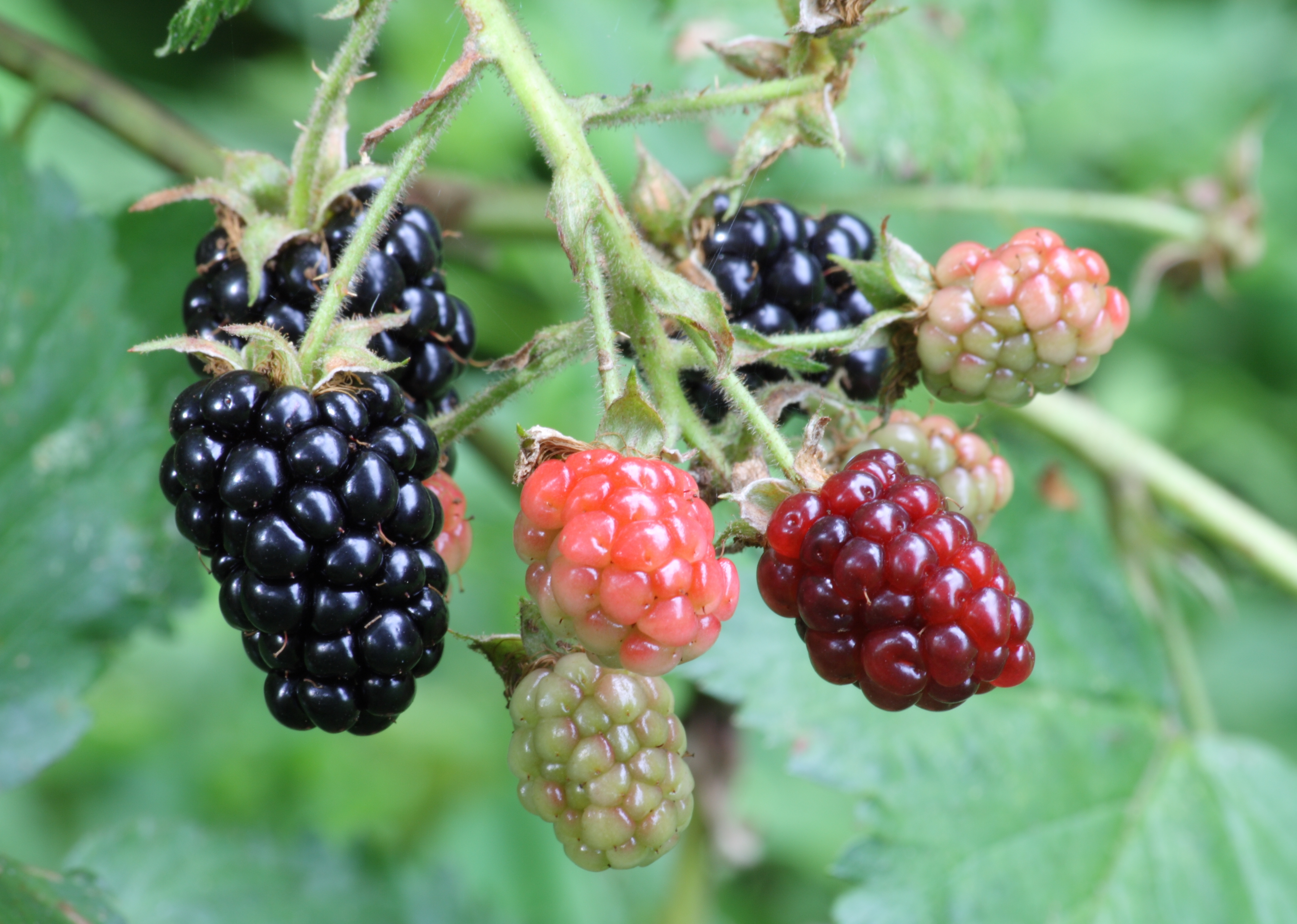
Blackberry
The blackberry is an edible fruit produced by many species in the genus Rubus in the family Rosaceae, hybrids among these species within the subgenus Rubus, and hybrids between the subgenera Rubus and Idaeobatus. The taxonomy of blackberries has historically been confused because of hybridization and apomixis, so that species have often been grouped together and called species aggregates. For example, the entire subgenus Rubus has been called the Rubus fruticosus aggregate, although the species R. fruticosus is considered a synonym of R. plicatus.[1]
This article is about the bramble fruit. For the handheld electronics brand, see BlackBerry. For other uses, see Blackberry (disambiguation).
Blackberry fruit production is abundant with annual volumes of 20,000 pounds (9,100 kg) per 1 acre (0.40 ha) possible, making this plant commercially attractive.[2]
Rubus armeniacus ("Himalayan" blackberry) is considered a noxious weed and invasive species in many regions of the Pacific Northwest of Canada and the United States, where it grows out of control in urban and suburban parks and woodlands.[3][4]
Nutritional value per 100 g (3.5 oz)
180 kJ (43 kcal)
4.88 g
5.3 g
Quantity
214 IU
Quantity
Quantity
88 g
Uses[edit]
Nutrients[edit]
Raw blackberries are 88% water, 10% carbohydrates, 1% protein, and 0.5% fat (table). In a 100 grams (3.5 oz) reference amount, raw cultivated blackberries supply 43 calories and rich contents (20% or more of the Daily Value (DV) of dietary fiber, manganese (31% DV), vitamin C (25% DV), and vitamin K (19% DV) (table).
In culture[edit]
Folklore in the United Kingdom and Ireland tells that blackberries should not be picked after Old Michaelmas Day (11 October) as the devil (or a Púca) has made them unfit to eat by stepping, spitting or fouling on them.[50] There is some value in this legend as autumn's wetter and cooler weather often allows the fruit to become infected by various molds such as Botryotinia which give the fruit an unpleasant look and may be toxic.[51] According to some traditions, a blackberry's deep purple color represents Jesus' blood and the crown of thorns was made of brambles,[52][53] although other thorny plants, such as Crataegus (hawthorn) and Euphorbia milii (crown of thorns plant), have been proposed as the material for the crown.[54][55]